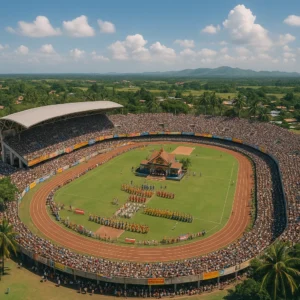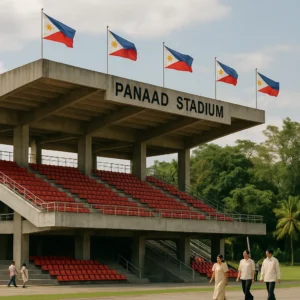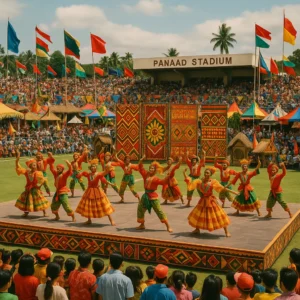In the heart of Bacolod City, Negros Occidental, a quiet revolution in Philippine sports began in 1998 with the inauguration of Panaad Stadium. More than a structure, it marked the start of a new era in national sports development — blending regional pride, cultural celebration, and football’s rising potential.
Explore how this landmark event became a pivotal moment for the country’s sporting legacy.

Birth of a Multi-Purpose Sports Landmark
Panaad Stadium wasn’t built solely for competition — its primary purpose was to serve as the main venue for the Panaad sa Negros Festival, a celebration of culture, music, and local identity in Western Visayas.
What Set the Inauguration Apart
-
Aligned with the province’s centennial celebrations
-
First large-scale stadium constructed in Negros Occidental
-
Designed to support track and field, football, and civic gatherings
-
Unveiled with a week-long festival that blended sports and tradition
This mix of cultural and athletic significance positioned Panaad uniquely among Philippine stadiums.

Highlights a major milestone after opening Panaad Stadium.
Catalyzing Football in the Visayas
The stadium’s football-friendly design became a game-changer for the sport outside Metro Manila. While many national competitions centered in Luzon, Panaad gave Visayan players a professional-grade venue to train and compete.

Lasting Impact on Philippine Football
-
Became a home ground for local powerhouse Ceres–Negros FC
-
Hosted key matches in the Azkals’ early international campaigns
-
Supported grassroots programs via the Negros Occidental Football Association (NOFA)
-
Inspired nearby provinces to invest in sports infrastructure
In a country where football often took a backseat to basketball, Panaad amplified the sport’s visibility — especially in the regions.
Driving Local Economy and Tourism
The 1998 inauguration didn’t just boost sports — it drove local tourism and economic activity in Bacolod City.

Economic Contributions Sparked by the Stadium
-
Increased hotel occupancy during events and tournaments
-
Supported local vendors through festival-related commerce
-
Created new infrastructure jobs during construction
-
Drew regional attention to Negros Occidental as a sports destination
The government’s strategic use of sports to fuel local growth became a model referenced by other LGUs in the Philippines.
Elevating Bacolod on the National Sports Map
Before 1998, Bacolod was often seen as a peripheral player in national sports. The inauguration of Panaad Stadium gave the city national media visibility and earned it a place in the Philippine sports conversation.
Regional Significance Gained
-
Hosted Palarong Pambansa and Southeast Asian Games football events
-
Became a preferred venue for international friendlies
-
Cultivated a passionate local sports fanbase
-
Developed into a training ground for future national athletes
Panaad Stadium helped decentralize sports excellence, previously concentrated in Manila and Luzon.
A Legacy That Continues to Grow
More than two decades later, the legacy of 1998 still echoes through every match played on Panaad’s pitch and every parade held on its track.
Why Panaad’s Legacy Still Matters
-
Continues to host the annual Panaad Festival
-
Serves as a key venue for national and regional events
-
Remains a symbol of Bacolod’s identity and pride
-
Acts as a model for integrating culture, community, and sports in city planning
Key Takeaways for Philippine Sports History
-
It merged sports, culture, and civic pride, setting a new national standard.
-
This landmark event reshaped the way the Philippines approached regional sports development.
-
By empowering Visayan athletes and communities, it expanded the national talent pool.
-
Even in 2025, Panaad continues to deliver economic, social, and athletic value.
